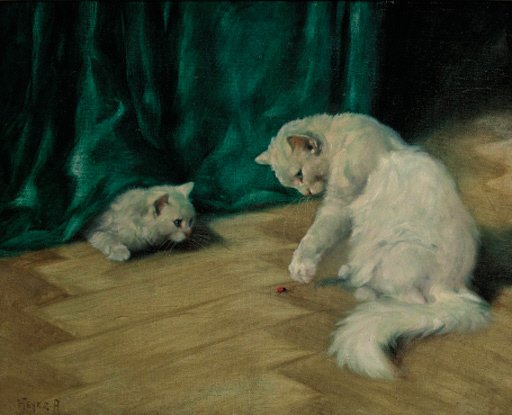Have you ever caught your cat staring at you with those deep, mysterious eyes, almost as if they’re peering into your soul? If you think your feline friend is just being curious—or plotting world domination—you might be missing something extraordinary. Cats aren’t just aloof companions with a knack for knocking things off tables. They’re emotional detectives, constantly decoding the world around them, especially the feelings of their humans. The truth is, cats are much better at reading moods than most people realize, and what they pick up on could surprise you. Get ready to see your furry housemate in a whole new light!
The Surprising Science Behind Feline Empathy

Many people believe cats are indifferent, but science is starting to prove otherwise. Recent studies have shown that cats are highly attuned to human emotions, often matching their behavior to their owner’s mood. When researchers observed cats and their people in controlled environments, felines responded differently to happy, sad, or angry tones of voice. Their ability to sense subtle changes suggests there’s much more going on beneath those whiskers. As pet owners, we may not give them enough credit for the emotional intelligence hiding behind those purrs and meows. The more researchers look, the clearer it becomes: cats can be emotional mirrors, reflecting and reacting to our inner states.
How Cats Use Body Language to Decode Emotions

Cats are body language experts, constantly observing the way we move and hold ourselves. A slouched posture might signal to your cat that you’re feeling down, while an energetic stride can tell them you’re happy or excited. Their sharp eyes take in every gesture—crossed arms, furrowed brows, or even tapping feet. Unlike many humans, who rely heavily on words, cats trust what they see. They might respond to a sad owner by curling up nearby, or to a stressed human by giving them some space. This silent communication shows just how finely tuned cats are to the people around them.
The Role of Scent in Mood Detection

To a cat, the world is a symphony of smells. Our emotions cause subtle shifts in our body chemistry, which can change our scent. If you come home anxious or upset, your cat can likely smell the difference. Think of it like a living mood ring—only furrier and with a twitching tail! Cats may respond by sniffing you more closely, rubbing against you, or even acting more cautious. Their incredible noses pick up on things we can’t, allowing them to sense when something’s off long before anyone else does.
Listening Beyond Words: The Power of Tone and Pitch

Cats may not understand every word you say, but they’re amazing at picking up on how you say it. A gentle, soothing tone can make your cat feel safe and loved, while a sharp or loud voice might put them on edge. This sensitivity is why your cat might hide when there’s yelling, or come closer when you’re speaking softly. They use the music of your voice as a guide, tuning into your mood even when you try to hide it. It’s a bit like having a built-in emotional barometer—no batteries required.
Facial Recognition: Reading the Human Face

While dogs are often praised for their ability to read faces, cats aren’t far behind. Studies have shown that cats can distinguish between happy and angry faces, especially when it comes to their favorite people. They may not react as overtly as dogs, but that doesn’t mean they’re not paying attention. If you’re frowning or crying, your cat might approach quietly, as if offering their silent support. Their observational skills are finely honed, always searching for clues to your feelings.
Mirroring Behavior: Cats as Emotional Chameleons

Have you noticed your cat acting differently when you’re having a bad day? Many cat owners report that their pets become more affectionate or playful depending on their mood. This isn’t just coincidence. Cats often mirror the emotional states of their humans, adapting their behavior to offer comfort or space. If you’re feeling anxious, your cat might slow down and stay close, like a soft, purring shadow. When you’re joyful, they may become more playful, reflecting your energy in their own quirky way.
Cats and Stress: Natural Soothers in a Chaotic World

Life can be stressful, but cats have a magical way of calming even the roughest days. Their rhythmic purring, soft fur, and gentle presence create a sense of peace that can melt away anxiety. Studies suggest that simply petting a cat can lower your blood pressure and reduce feelings of stress. This isn’t just coincidence—cats seem to know when we need a little extra comfort. They might climb into your lap or nuzzle your hand, offering silent reassurance that you’re not alone.
The Healing Power of Purring

There’s something almost mystical about the sound of a cat’s purr. It’s not just a sign of contentment; it’s also believed to have healing properties. Purring occurs at frequencies that can promote tissue regeneration and reduce pain, both for cats and their humans. When you’re feeling low, your cat’s purr can act like a natural lullaby, soothing your nerves and lifting your spirits. It’s as if your feline friend is using their own special magic to help you heal, both physically and emotionally.
Cats and Children: Emotional Support from an Early Age

Children often form deep bonds with their cats, turning to them for comfort and companionship. Cats seem to instinctively know when a child is upset or needs a friend, curling up beside them or gently nudging them with their nose. This early emotional support can help kids learn empathy and resilience, shaping their ability to connect with others. Cats become silent confidants, offering unconditional love and understanding without ever saying a word.
Helping with Grief and Loss

When tragedy strikes, it can feel like the world has stopped turning. During times of grief, cats often step up as quiet sources of comfort. Their steady presence and gentle touch provide solace when words fall short. Some people report that their cats become extra attentive during periods of mourning, staying close and offering a sense of stability. This unwavering support can help ease the pain and remind us that we’re not alone, even in our darkest moments.
Detecting Illness: Cats as Early Warning Systems

Believe it or not, some cats can sense when their owners are unwell. There are countless stories of cats alerting their humans to medical problems—like sitting on a sore spot, or acting restless when something’s wrong. Scientists think cats might be able to detect changes in body odor, temperature, or even subtle shifts in behavior. While they’re not a substitute for a doctor, their keen senses can sometimes provide early warnings that something isn’t right.
Social Intelligence: Navigating Complex Human Dynamics

Cats don’t just read the moods of their owners—they’re also skilled at navigating complex social situations. In multi-person households, cats often develop unique relationships with each member, adjusting their behavior based on individual personalities and moods. They might be playful with one person and more reserved with another, showing an impressive level of social intelligence. This adaptability allows them to thrive in all sorts of environments, making them perfect companions for families of any size.
Understanding Boundaries: Respecting Personal Space

One of the most unique things about cats is their respect for boundaries. Unlike some pets that demand constant attention, cats are sensitive to when you need space. They can sense when you’re overwhelmed or busy, quietly retreating until you’re ready for company. This respect for personal space is a sign of their emotional awareness, showing they understand the importance of balance in relationships. It’s almost as if they know how to be the friends you need, exactly when you need them.
Unique Personalities: Every Cat, a Different Emotional Reader

No two cats are exactly alike, and their ability to read moods can vary widely. Some are natural nurturers, always ready to offer a comforting purr. Others are more independent, choosing to help in their own quirky ways. This diversity is part of what makes living with cats so fascinating—you never know exactly how they’ll respond, but you can always count on them to notice when something’s different. Each cat brings their own style of emotional support, tailored to their personality and yours.
Bonding Rituals: How Shared Routines Strengthen Emotional Ties

Routines are powerful for both humans and cats. Whether it’s a morning cuddle, a shared mealtime, or a nightly play session, these rituals create a foundation of trust and understanding. Through repetition, cats learn to anticipate your moods and needs, deepening the emotional bond between you. These shared moments become touchstones in your relationship, reminding both of you that you’re part of each other’s world.
The Role of Play: Lifting Spirits Together

Playtime isn’t just about burning off energy—it’s a chance for cats and humans to connect on a deeper level. Engaging in games can lift your mood, boost your spirits, and remind you of the joy in simple moments. Cats often sense when you need a break from stress, inviting you to play with a gentle nudge or a playful pounce. This shared laughter and movement can break through even the toughest days, proving that sometimes, the best therapy comes with whiskers and a wagging tail.
Why Cats Don’t Always Show Their Feelings (But Still Understand Yours)

Cats have a reputation for being mysterious, and they don’t always show their feelings in obvious ways. But just because they’re not wagging their tails or licking your face doesn’t mean they aren’t tuned into your emotions. Their subtle gestures—a slow blink, a soft head bump, a quiet purr—speak volumes if you know how to listen. Understanding these signals can open up a whole new world of communication, revealing the deep emotional connection that’s possible between cats and their humans.
How to Strengthen Your Emotional Connection With Your Cat

Building a strong emotional bond with your cat takes patience, observation, and a willingness to meet them halfway. Spend time together doing things your cat enjoys, whether that’s playing, cuddling, or simply sitting side by side. Pay attention to their cues, and try to match your energy to theirs. Over time, you’ll find your cat responding to your moods more clearly, deepening the silent conversation that only the two of you share. The bond you build can become one of the most rewarding relationships in your life.

Growing up traveling and experiencing new cultures and wonders, I have had a passion for nature, adventuring, photography, and videography. I am currently working towards a BSc in Biodiversity and Ecology at Stellenbosch University, and I hope to specialise in Marine Sciences one day.
Please send any feedback to Feedback@animalsaroundtheglobe.com






